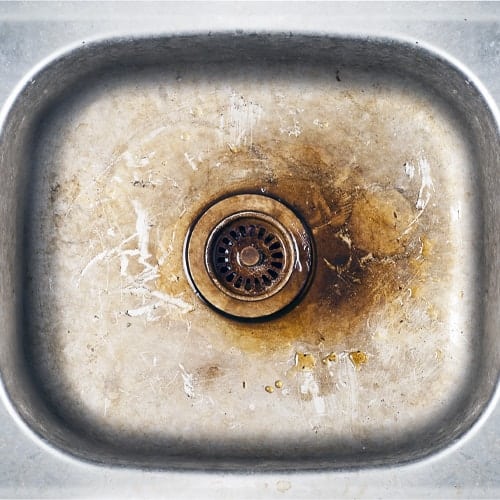Biofilm is basically any group of one or more kinds of microorganism that’s able to form and grow into colonies on various surfaces. The kinds of microorganisms we’re talking about here include well-known substances like bacteria and fungi, and lesser known things called protists. The problem with biofilm is that it can form rather easily in many places, and it can be hazardous to human health.
What Exactly Is Biofilm?
Biofilm can be many things, but in general it’s any group of microorganisms that collects into a colony on some surface. These include:
- Bacteria
- Fungus (fungi)
- Algae
- Protists (single-celled organisms)
- Dental plaque (on teeth)
- Pond scum
- And many others
You might be surprised to learn that you already know quite a bit about biofilm, even if you weren’t aware of that particular term. Truth be told, if you’ve ever noticed algae buildup in a body of water, then you have seen biofilm.
What Causes Biofilm?
Now that we know what biofilm is, let’s take a look at what causes it to form in the first place. Scientifically speaking, “Biofilm formation is a process whereby microorganisms irreversibly attach to and grow on a surface and produce extracellular polymers that facilitate attachment and matrix formation, resulting in an alteration in the phenotype of the organisms with respect to growth rate and gene transcription.”
If you’re like most people, that makes about as much sense as random letters swimming in a bowl of alphabet soup.
Here’s what it actually means in terms that most people understand: A biofilm (of bacteria, for example) forms when a microorganism is allowed to hang around and stick to some object in a wet environment, then starts to reproduce.
You can imagine one bacterium floating up, then another appearing, and another and another, until there’s a whole bunch of them stuck together in a gross little colony of bacteria. The good news is that this can’t just happen anywhere. It has to be a moist environment for them to stick to the surface, such as in a bathtub or shower. Ever seen a ring of film around the drain? That’s biofilm.

Is Biofilm Bad for You?
By this point, you’re probably wondering whether biofilm is harmful for humans. As we mentioned at the beginning, it absolutely can be hazardous to our health.
You probably already know that most bacteria and fungi aren’t good for us to come into contact with or consume. Well, just imagine having a bunch of these all in one place, and you can start to see the problem of having biofilm hanging around the house!
As one source points out, “Biofilms can grow on medical implants, creating the opportunity for infections to flourish and even facilitate human deaths, for these tough microbial communities can resist antibiotics and evade the immune system. Biofilms on food-contact surfaces in restaurant, institutional and home kitchens afford foodborne pathogens [such as] E. coli and Salmonella the opportunity to survive.”
That sounds like a scary thing, and it certainly can be. However, here’s two good pieces of news: biofilm can be treated, and not all biofilms are bad. Some can actually be beneficial and put to good use, such as in the utilization of biofilm to treat waste water and cleaning up gas/oil spills.

Find out more about in home water filtration and
Even so, you do not want biofilm in your drinking water. Since biofilm is often made up of bacteria, that’s basically like drinking bacteria. Thankfully, there are ways to remove biofilm from your drinking water.
How to Remove Biofilm from Your Drinking Water
The three main ways to remove biofilm from drinking water are water filtration, pipe jetting or cleaning, and whole home pipe replacement. Each of these offers its own advantages.
Water Filtration
One relatively straightforward way to get rid of biofilm in drinking water is through the use of water filtration systems. You might think of a pitcher you put in the fridge with a replaceable built-in filter. While this is certainly one way to filter water, there is actually a much more integrated and robust method for getting it done.
A whole house water filtration system literally does exactly what it sounds like. It filters all the water in your home, so that you can safely use water for any purpose (bathing, drinking, watering plants, etc.) with peace of mind, knowing that any biofilm has already been scrubbed away and removed.
Pipe Jetting (aka, Pipe Cleaning)
Another method for getting rid of dirty, unwanted biofilm from your drinking water is to simply have a professional come out and clean your pipes. This process is known as “pipe jetting” or “pipe cleaning”, and it allows you to have freshly clean pipes without a full replacement throughout your entire home.
Whole Home Pipe Replacement
In certain cases, all of the pipes just need to be replaced. Since pipes can last anywhere from several decades to an entire century, this is far more frequent in older homes than new ones. That said, if you do need a full pipe replacement, then you will need to hire a local plumber that knows the area and the best replacement options for your home.
Biofilm: The Good, The Bad, and The Ugly
Biofilm can be a real eyesore. It can also be hazardous to human health if you end up consuming it through your drinking water. With all this in mind, it might be time to have someone come to a checkup on your pipes to give you peace of mind about the water you and your family are drinking and bathing with each day. Have questions or concerns? Call or email us today at Kay Plumbing to talk to a specialist about whole home water filtration and pipe replacement today.

